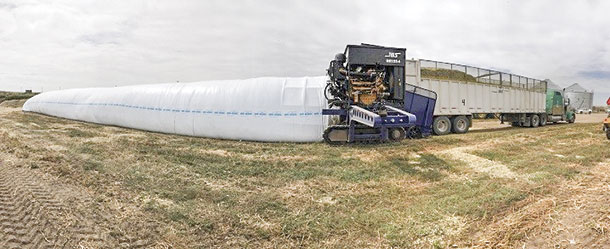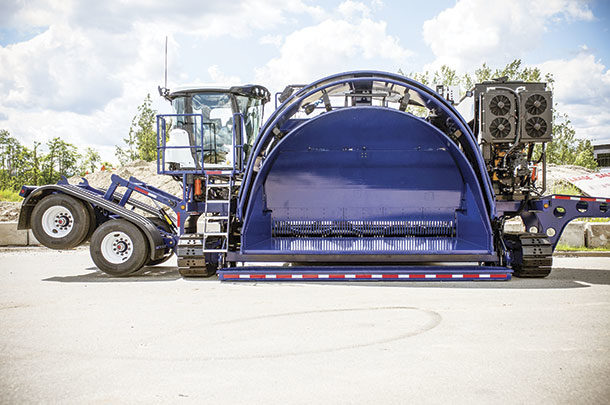Today’s silage producers are offered a plethora of products, techniques and tests to aid in the production process, each claiming to improve efficiency and provide savings that can be seen in a producer’s bottom line.
While new varieties and research are undeniably helping to provide producers more options and understanding in the seed marketplace, the real evolution of the last two decades has been in the harvesting and storage of silage.
Luis Ferraretto, assistant professor of animal sciences at University of Florida, says that understanding the components of ensiling a high-quality feed can provide a greater return on investment for a producer at feedout.
“For years, we thought that chop length was the most important factor in the quality of silage, but today, we know that kernel processing is just as important,” says Ferraretto. “You find maximum digestibility by monitoring both kernel processing and chop length, producing the greatest amount of broken kernels possible while maintaining effective fiber.”
Timeliness from harvest through storage has also become an increasingly managed component of the production process – one producers are seeing pay dividends of increased digestibility, decreased loss and improved overall quality of the feedstuff.
The largest losses occur during fermentation. To a producer, that knowledge means the profit margins are the narrowest between the wagon and the feedstuff beginning to ferment in storage.

As soon as the plant is cut, respiration begins, and a producer’s economic stopwatch begins counting the minutes and hours until the crop’s exposure to oxygen ceases … when the storage is sealed. The faster the silage is sealed, the faster the fermentation process will begin and the better the overall quality of the silage at feedout will be.
“If your whole focus on silage is to get done fast, your feed quality will reflect that,” Alexis Arthur, co-owner and sales manager of Pacific Forage, says. “What’s key from a feed standpoint and the step that should see the most time, is on the back end, where a producer is ensiling feed. Pack is key.”
Finding storage efficiency
The ease of use, mobility and efficiency of bagging has been an attraction to silage producers and feeders for decades, with improvements and new mechanical innovations helping to streamline the option and make the process more efficient.
“Bagging is back in the forefront of silage storage; producers are seeing the quality that bagging can provide and what that means for their operation. For too long, we have been focused on quantity [of silage] produced rather than the quality fed out,” Arthur says.
Silage bagging is around 97 percent efficient, meaning the loss of total feed is only around 3 percent, at most, because of the mitigation of oxygen exposure created by the density and compression of the silage being packed into the bag.
For comparison, a producer can expect to see losses as high as 11 to 15 percent, sometimes more, in a bunk storage system. Still, the conventional bagging process does leave room for operator error while the dimensions and setup of most traditional baggers on the market leave producers questioning the mobility of the units.
An offered solution to the mobility issues of traditional silage baggers is a bagger that allows a producer greater efficiency in the mobility and setup and teardown of the machine while offering added compaction and a better fill.
Technology within these machines senses the compaction as the feed progresses into the tunnel and bag, allowing for specific fill rates and eliminating oxygen, making the process extremely user-friendly by eliminating the need for the operator to gauge the fill.
Ron Armstrong owns and operates Yuma, Colorado-based, Armstrong Equipment LLC and offers custom bagging with the JBS Track-Pack, selling to large dairies and feedlots alike.
“For our business, the main attraction of this machine was the track versus tires and wheels,” Armstrong says. “Some machines use an anchor or cable that drags through the bag in combination with the brakes on the wheels to provide the resistance necessary to pack the silage into the bag.
This new bagger just uses the traction of the large surface area of the tracks to provide the resistance needed to pack the silage. The tracks also perform better than wheels on sandy or softer ground.
“It’s actually packing the silage tighter, and the density is higher; that’s where we are getting the increase in capacity,” he says.
That tighter pack also means a better quality of feed, as the airspace is squeezed out of the silage and fermentation accelerates inside the bag; the process is both more efficient from a time savings and feed quality aspect.
Solutions for every operation
No matter which technology a producer chooses to integrate into their operation, the cost has to make sense financially. Labor, tractors, other on-farm storage accessibility, losses and the end user of the silage are all factors that have to pencil out to make upgrades worthwhile and feasible.
Machine costs and technology can add up quickly and overspending in one area of the production process could mean shortfalls elsewhere.
In a perfect situation, the weather and soil produce a bumper crop, followed by a one-day, “no breakdowns” harvest and ensiling process that expedites fermentation. At feedout, the prices you receive for those end products of milk and beef are higher than breakeven.
If you farm, you are shaking your head at this sentence. Perfect doesn’t happen, especially not in agriculture. Technology, research and advancement can help mitigate the risks of agriculture, but it’s up to every producer to decide what level makes sense for their operation. ![]()
PHOTO 1: Silage baggers, as with all larger equipment, are becoming more mobile to facilitate producer needs.
PHOTO 2: Producers appreciate high-capacity silage baggers that create a tighter pack. Photos courtesy of JBS.
Laura Handke is a freelance writer based in Kansas. Email Laura Handke.










